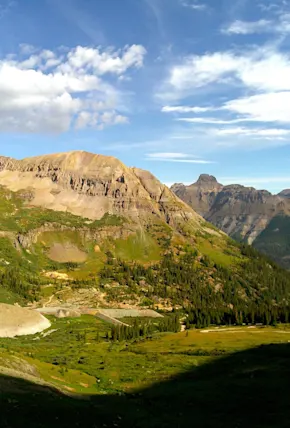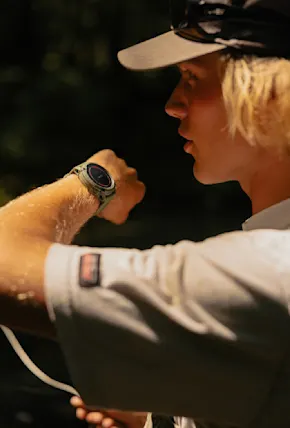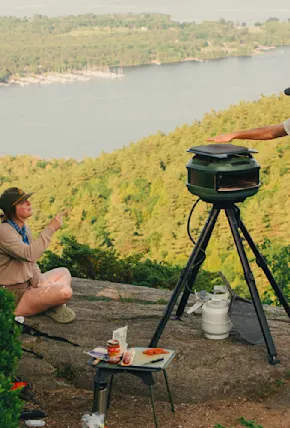Every photographer—hobby shooter, amateur, or pro—knows all too well the risk of falling into the crevasse that is gear obsession. There's always another lens, strap, tripod, or filter that, you're convinced, will help you get that perfect shot. Then just when you round out your kit you discover film photography and eBay; God save you, no search and rescue team can extract you, you're doomed. I've been in and out of this chasm for a while. I've been using my role as a writer to poll some of the world's best photographers to find out what gear they use, hoping their insight can save me from this plight. There's one brand that's on every one of their lists: Peak Design. The company is well known for their straps and travel bags, and now they're releasing their most exciting collection in years: the Outdoor Line.
The Outdoor Line consists of a 25-liter and 45-liter Outdoor Backpack, a seven-liter sling, and a two-liter sling. They're all designed with rugged materials and the modular versatility that's made bags like their Everyday Backpack so popular. That pack isn't really made for the outdoors but I've seen plenty of people hiking with it; these bags, skinned with 210-denier ripstop and containing all the features outdoor bags, are. Peak Design launched the collection on Kickstarter in September but I was able to get my hands on an early sample of the 45-liter pack so I took it to the French Alps for a mini hut trip to see how it handles on some world-class trails.

The Peak Design Outdoor Backpack 45L
Peak Design Outdoor Backpack 45L Features and Specs
The thing I've always loved in Peak Design's stuff is that there are so many features integrated—smartly, with design and form in mind—into the space that's available. So here's a list of what you'll find in the Outdoor Backpack. First, pockets: a main compartment with expandable roll-top and zippered back panel access, a front sleeve pocket, flexible mesh side sleeve pockets on both sides, smaller zippered front exterior pockets and a small zippered internal pocket, hip belt pockets, shoulder strap pockets. That hip belt is removable and stowable by the way, and the shoulder straps are easily adjustable. There's a laptop sleeve that also works as a hydration sleeve and pass-throughs for routing a hose to sip from. The front panel and pack bottom are waterproof, and PD is selling a separate rain cover for both bags too. The bag is 34.5 liters and expands to 45 with the rolltop and it's a one-size-fits-all design with built-in adjustability.
Peak Design Outdoor Backpack Pros
It's Perfect for Quick Trips
I landed in Geneva, Switzerland around 8 AM on a Tuesday. After a little more than an hour in a van, some repacking in a hotel lobby, and 30 minutes on a bus, I was at the base of Le Tour ski area hiking up towards the Glacier du Tour. My plan was to spend the night at the Refuge Albert Premier, a common jump-off point for mountaineers heading up higher to mountain peaks, and then wind my way back down to the valley the next day. The refuge has bunks and serves dinner and breakfast, so I could pack "light." Quotation marks, because by "light" I mean my DSLR, two lenses, a spare battery, a strap, my old Canon film camera and some 35mm film, plus layers (even in August it was cold up above the ice line), toiletries, water, and snacks, including the requisite baguette shoved down the pack's side sleeve. When in France.
















